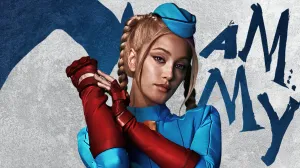
Harleen #1 has provided me with a new perspective on both its titular hero and the new Black Label series’ creator Stjepan Šejić. Both are likely familiar to readers of superhero comics: Harley Quinn has become one of the most recognizable figures in DC Comics’ canon, including multiple film adaptations, in the past decade and Šejić has collected a dedicated fan following for both his official projects and titillating takes on the side. Neither have been essential to my reading habits for a variety of reasons, but the over-sized debut issue of this three-part origin story provides them with an ideal setting to entice new readers. After finishing Harleen #1, I know that I will at least be reading the rest of this series.
Videos by ComicBook.com
Harleen Quinzel is typically defined by outside actors. Her origin is framed as a Joker story, one in which Batman’s archnemesis corrupts a young psychiatrist and transforms her into a new member of the Gotham City rogues gallery. Harleen shifts that narrative in a significant fashion, one that emphasizes Harleen’s own agency. Joker, Batman, and plenty of other familiar characters are present in this story, but it’s Dr. Quinzel who drives the action. Joker appears early in the story, but his appearance provides an inciting event which Harleen may respond to rather than a character that chooses on Harleen’s behalf. Their fateful meeting is heavily foreshadowed, but the vast majority of this hefty read is dedicated to exploring Harleen’s motives and direction as a caring physician with ambitions and desires that are entirely her own.
Šejić maintains a clear focus on Harleen, even when Batman and Joker are engaged in spectacular splash-filled combat, through the use of an ongoing, interior monologue. While these captions sometimes near the precipice of telling more than showing, they never approach the burdensome, text-laden pages that are the downfall of many current DC comics. There’s an awareness of which moments shouldn’t be shackled with extended word counts and dialogue is often packed into dense, yet well-defined, individual pages. Harleen works through her own strengths and flaws with the earnestness of a patient on a reclining couch, readily telling stories and always speaking with the slightest glean of uncertainty. Only a few moments fall flat, the worst offender being the origin of the name “Harley,” a joke so distasteful and mean that it distracts from an otherwise generally engrossing read.
In spite of a few hiccups like that and other slightly too obvious moments, Šejić’s writing chops exceed many of his contemporaries. There’s a comfortable push-pull rhythm between the density of writing and showcasing of spectacle. Whenever popular figures, nightmares, or a little bit of action does surface, both the larger page and Šejić’s own confidence make these moments shine. Each moment of indulgence is well chosen, including a heavily-detailed Bat-vehicle and spreads capturing mythic impressions of popular characters with hazy backgrounds. They are exciting beats that balance the thoroughness of many other pages.
Figures capture a clear aesthetic, whether that’s the handsomeness found in Harleen and Joker or fearsomeness of so many Arkham inmates. That an attractive profile is never used to romanticize the looming cycle of abuse between Harleen and Joker provides a lot of optimism about the direction of this particular story, too.
Harleen #1 presents Stjepan Šejić at his absolute best, constructing a sleek and sexy world that rarely falters in its storytelling, and one that strikes a far better balance between the distinct crafts of writing and art than most collaborative superhero comics. This confidence and the extra space in which it develops an atypical approach is also what allows for Harleen Quinzel to tell her own story. Acknowledging the Joker without ever forgetting about Harleen’s own power is a difficult task and exactly the accomplishment which makes Harleen #1 stand out. It makes a promise that this series is and will remain her story, rather than falling into service for even more popular characters from the past. If that promise is fulfilled, then Harleen could provide a new standard for Harley Quinn as she continues to grow beyond the comics page.
Published by Black Label, an imprint of DC Comics
On September 25, 2019
Created by Stjepan Šejić
Letters by Gabriela Downie
Cover by Stjepan Šejić








